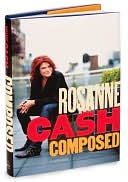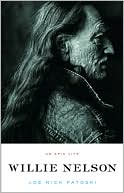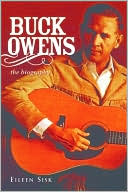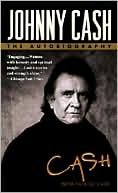I Lived to Tell It All
Strong and sober, George Jones looks back on his life with searing candor. From his roots in an impoverished East Texas family to his years of womanizing, boozing, brawling, and singing with the voice that made him a star, his story is a nonstop rollercoaster ride of the price of fame. It is also the story of how the love of a good woman, his wife Nancy, helped him clean up his act.
Search in google:
Strong and sober, George Jones looks back on his life with searing candor. From his roots in an impoverished East Texas family to his years of womanizing, boozing, brawling, and singing with the voice that made him a star, his story is a nonstop rollercoaster ride of the price of fame. It is also the story of how the love of a good woman, his wife Nancy, helped him clean up his act. Publishers Weekly Country music star Jones started performing in rural Texas bars when he was 14 and rose to fame in spite of heavy drinking, drugging, brawling and a penchant for not showing up at his concerts. Writing with Carter, coauthor of books with Ralph Emery, Reba McEntire and others, he lays bare his troubled past, including an account of his disastrous marriage to country singer Tammy Wynette. It's not a pleasant story, and Jones himself is amazed that his career has prospered in spite of everything he has done to destroy it. Now 65 and recovered from a triple bypass operation, he claims he has conquered his addictions and settled into a happy marriage. There are no insights here about his musical abilities or the reasons for his success, but Jones makes sobering comments on the state of country music today, which he observes is mass-marketed and mass-produced for the young with total disregard for the older performers like himself who started it all. Photos not seen by PW. (Apr.)
\ Publishers Weekly - Publisher's Weekly\ Country music star Jones started performing in rural Texas bars when he was 14 and rose to fame in spite of heavy drinking, drugging, brawling and a penchant for not showing up at his concerts. Writing with Carter, coauthor of books with Ralph Emery, Reba McEntire and others, he lays bare his troubled past, including an account of his disastrous marriage to country singer Tammy Wynette. It's not a pleasant story, and Jones himself is amazed that his career has prospered in spite of everything he has done to destroy it. Now 65 and recovered from a triple bypass operation, he claims he has conquered his addictions and settled into a happy marriage. There are no insights here about his musical abilities or the reasons for his success, but Jones makes sobering comments on the state of country music today, which he observes is mass-marketed and mass-produced for the young with total disregard for the older performers like himself who started it all. Photos not seen by PW. (Apr.)\ \ \ \ \ Library JournalHaving recorded over 250 albums, George Jones is considered by many critics to be the greatest country music singer of all time. He is also a recovering alcoholic and drug addict, having miraculously survived such a massive chemical ingestion that it makes many rockers-of-repute look like mere amateurs. This book effectively combines all three tales: Jones's rise into and maintenance of country stardom, his collapse into addiction, and his painful crawl out of its pit. Jones's writing, colloquial but not corny, captures and holds the reader easily. While the primary focus is on Jones's career and conflicts, we also see much of both the country music world as a whole and many of its most prominent individual figures. This is a truly remarkable story of an individual's battle with and triumph over chemical addiction-musician or not. As such, it is strongly recommended for any collection in this area as well as for popular music collections. Don't miss this book.-Bill Piekarski, Southwestern Coll. Lib., Chula Vista, Cal.\ \ \ Ray Olson"Yeah, but just barely" is an apt response to the title of the as-told-to autobiography of epically depraved country singer Jones. For 35 years and more, at the same time that he quickly became and has ever since remained the country singers' country singer, he was more or less on a continual binge. Alcohol was his drug of first choice until a manager, who eventually wound up in the clink for dealing it, introduced him to cocaine. Then, just a few years ago, he quit first coke and then booze, thanks, he says, to the persistence and love of his fifth wife (the only one of the five he admits to having beaten--what third spouse Tammy Wynette has said about him using his fists and nearly his guns on her is not true, Jones insists). His recollections, considerably assisted by Carter's interviewing of his associates to fill in the many blanks he admits drugs and booze have drawn in his mind, are filled with both plenty of regrets and lots of the rough, practical-joke humor, much of which arises from incidents that weren't funny at all at the time, that seems a constant in the lives of perpetually touring popular musicians. And through it all, Jones has kept his astonishingly supple, expressive, and powerful voice. Amazing.\ \ \ \ \ Kirkus ReviewsThe life and times of a hard-livin' good ol' boy.\ George Jones is one of the most distinctive singers in all of country music, with a wonderfully expressive voice that ranges from a plaintive tenor to a rumbling baritone. Born in rural East Texas to a hard-working, although alcoholic, father and a God-fearing mother, Jones showed early skill as a singer, performing for pennies on the streets of Beaumont. He began recording in 1954, although his first big hits came in the early '60s with songs drenched in honky-tonk heartache. He married Tammy ("Stand By Your Man") Wynette in 1969, and they recorded a series of hugely successful duets, beginning with 1973's "We're Gonna Hold On." They continued to record together even after their divorce. In the '80s, Jones had a tendency to coast along on his reputation, both in the choice of his material and in often spiritless (or missed) performances, due to an increasing dependence on alcohol and cocaine. Of late, he has made yet another comeback. This lackluster tell-all suffers from several major problems. It is more a series of vignettes than a coherent life story, so those not already familiar with Jones and his work may be a bit confused. Jones himself admits that the book barely deals with his musical life, skimming over how material was written and recorded. And despite owning up to his own weaknesses for binge drinking, loose women, and cocaine (since overcome, thanks to the devotion of his latest wife, Nancy), Jones offers inconsistent explanations for abusive behavior. He claims he suffered from blackouts after apparently battering then-wife Tammy and trashing their home, but then accuses her of battering him and purposely destroying their property to convince him to stop drinking.\ Introspection is not the guiding force in this rags-to- excesses story.\ \ \








